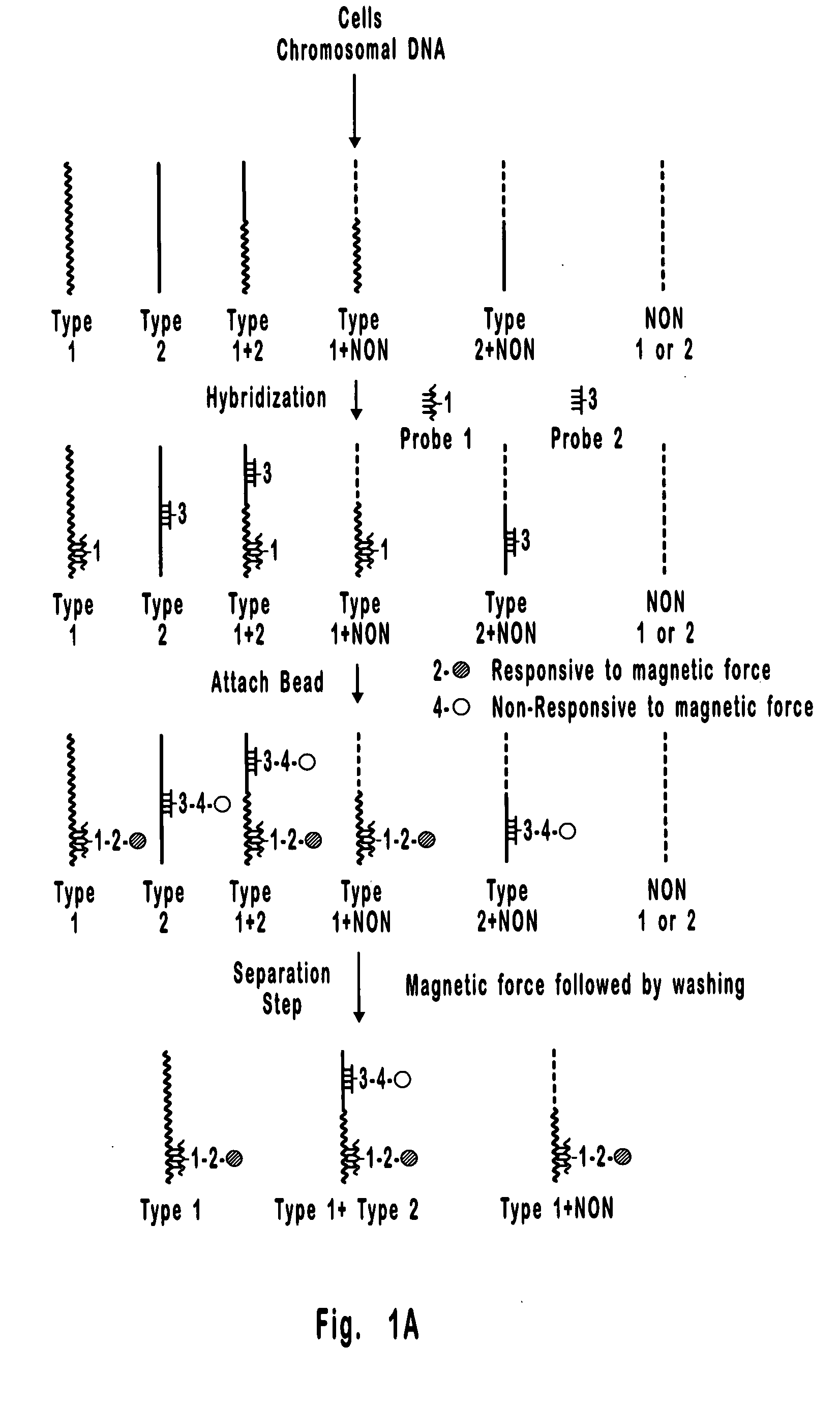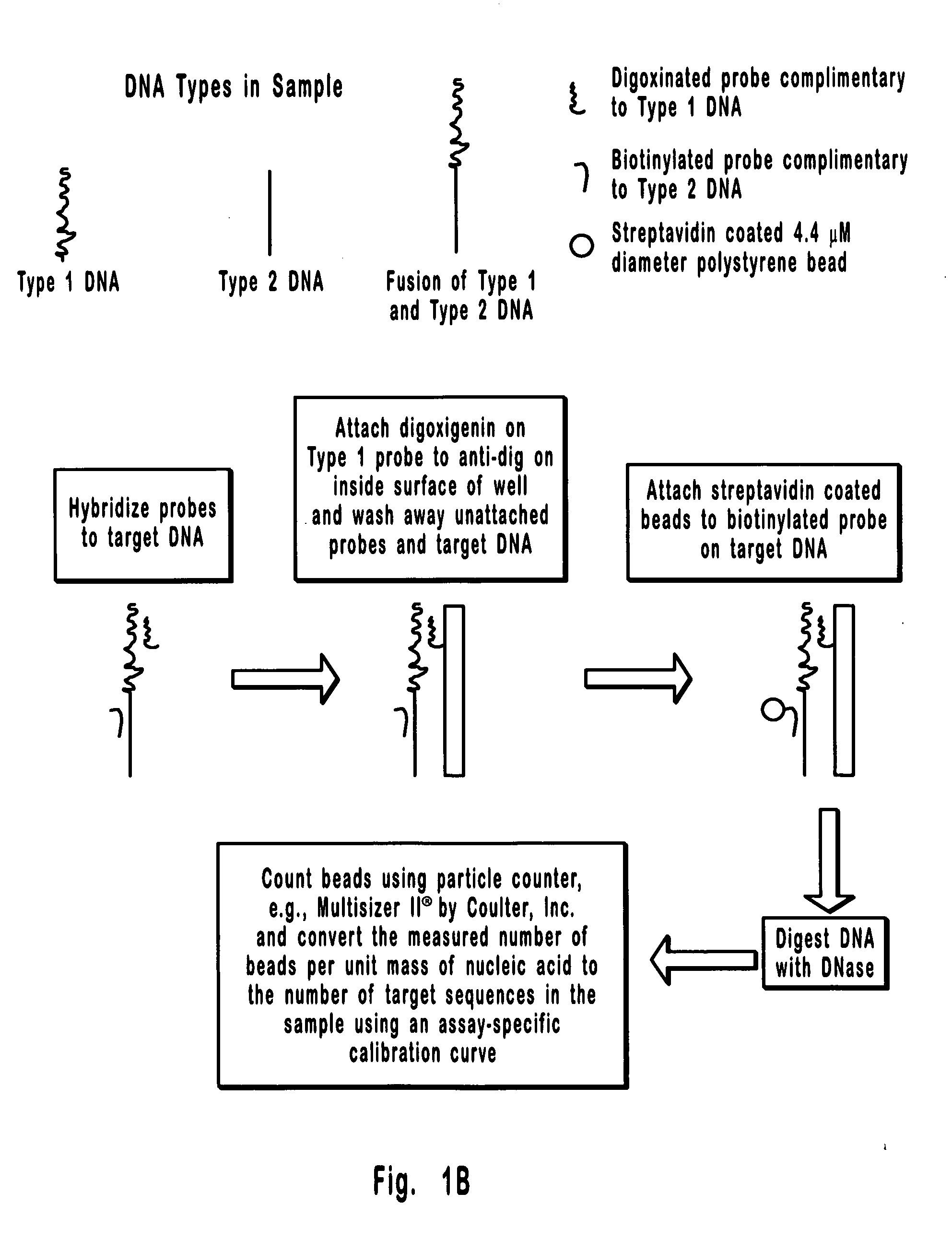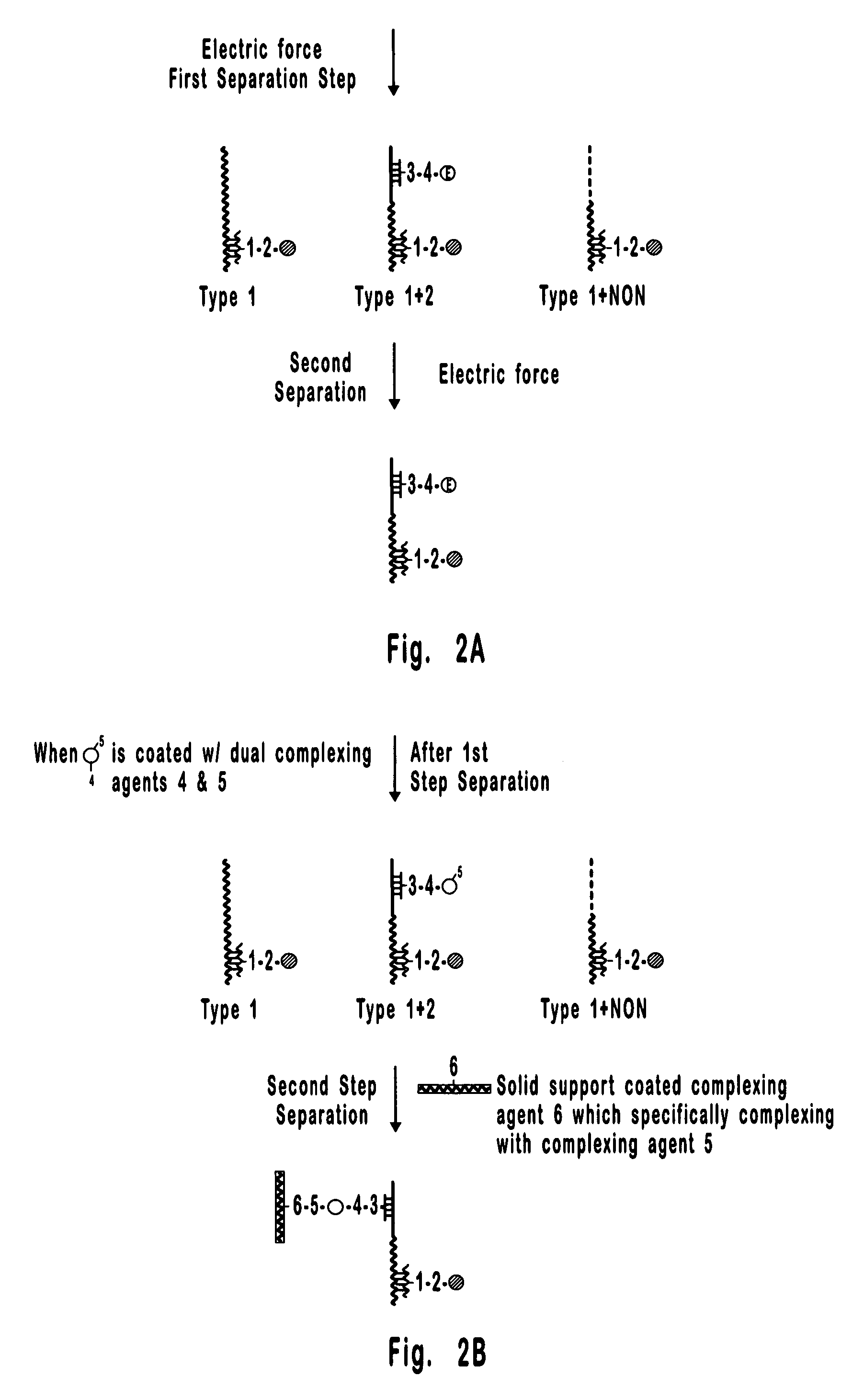Particle analysis assay for biomolecular quantification
a biomolecular and particle analysis technology, applied in the field of particle analysis assay for biomolecular quantification, can solve the problems of reducing the sensitivity of fish assay, not being able to detect chromosome translocation, and not being able to determine the frequency of chromosome translocation
- Summary
- Abstract
- Description
- Claims
- Application Information
AI Technical Summary
Benefits of technology
Problems solved by technology
Method used
Image
Examples
example 1
[0087] This is an example of a method that can be used to separate and quantify DNA with two unique and non-overlapping sequences. In this example, the sequences (identified here as Type 1 and Type 2 DNA) span 0.8 kb each and are about 17 kb apart on a contiguous 18.2 kb double stranded DNA molecule. Importantly, these sequences are too far apart for detection by PCR, which is limited to less than about 10 kb, and the 18.2 kb extended DNA molecule is too small for detection by FISH which is generally limited to the detection of condensed DNA such as that in metaphase chromosomes. Hence, the separation and detection demonstrated in the present example could not have been accomplished using available methods. It is also important to note that the DNA molecule selected for this example could just as well have been the result of a rearrangement between Type 1 and Type 2 DNAs, where, for example, Type 1 DNA is from one chromosome and Type 2 DNA is from another chromosome. Hence, the meth...
example 2
[0127] As discussed above, Stage 2 separation and quantification can also be accomplished by particle counting and size distribution analysis.
[0128] Filtration. For example, if Stage 1 separation is by magnetic force and Stage 2 is by filtration of beads, then the magnetically responsive beads would simply be selected to be larger than the non-magnetic beads. This would permit rapid separation of magnetically-responsive beads from non-magnetic beads. Because the only magnetically non-responsive beads remaining after Stage 1 separation are those complexed with magnetically-responsive beads via hybridization to the same contiguous nucleic acid molecule, the number of non-magnetic beads after Stage 1 would be proportional to the number of target nucleic acid molecules in the hybridization mix.
[0129] To facilitate separation of the beads by filtration, Stage I could be followed by detaching DNA from beads (e.g., via DNase treatment or cleavable linker) and filtering the beads through ...
example 3
[0142] This is an example of a method that can be used to separate and quantify nucleic acids (or chromosomes) with two unique and non-overlapping sequences, both on a contiguous nucleic acid molecule or chromosome. In this example, the two different sequences are identified as Type 1 and Type 2 nucleic acid sequences.
[0143] The method of the present disclosure includes, but is not limited to, the use of two kinds of microbeads. One kind of microbead is responsive to a magnetic field (e.g., Dynabeads Streptavidin, Product #112.05 from Dynal A / S, Oslo, Norway) and could be coated with biotinylated nucleic acid probes complementary to Type 1 nucleic acid sequences by attaching to the avidin on the surface of the magnetically-responsive beads. The other kind of microbead is not responsive to a magnetic field (e.g., streptavidin-coated polystyrene beads from Bangs Labs, Fishers, Ind.) and could be coated with biotinylated nucleic acid probes complementary to Type 2 nucleic acid sequenc...
PUM
| Property | Measurement | Unit |
|---|---|---|
| diameter | aaaaa | aaaaa |
| diameter | aaaaa | aaaaa |
| diameter | aaaaa | aaaaa |
Abstract
Description
Claims
Application Information
 Login to View More
Login to View More - R&D
- Intellectual Property
- Life Sciences
- Materials
- Tech Scout
- Unparalleled Data Quality
- Higher Quality Content
- 60% Fewer Hallucinations
Browse by: Latest US Patents, China's latest patents, Technical Efficacy Thesaurus, Application Domain, Technology Topic, Popular Technical Reports.
© 2025 PatSnap. All rights reserved.Legal|Privacy policy|Modern Slavery Act Transparency Statement|Sitemap|About US| Contact US: help@patsnap.com



